MP32 MKII Microphone Shield
- Professional microphone shield for practical mounting behind the microphone
- Minimises reflections, noise and room reverberation - ideal for dry voice, vocal and instrument miking
- Flexible lightweight construction with metal guide rail and grippy thumbscrews for adjusting depth and height
You may change your order at any time.
The microphone shield from auna Pro is the cost-effective solution for professional sound recording studios with adverse environmental conditions. With flexible ergonomics, it is ideal for live applications.
The acoustically optimised foam (5cm thick) has a high density, minimising unwanted reflections and noise while reducing the room reverb, which is especially essential for for particularly dry-sounding recordings. The flexible lightweight design can be quickly and easily mounted on conventional microphone stands or brackets using the supplied adapter.
With a depth guide rail made of metal that is adjustable in height and depth, as well as large, grippy thumbscrews, the auna Pro microphone screen can be adapted to the spatial conditions and body size in just a few steps. The back panel has metal profiles as well as a perforated aluminium plate that protects the sensitive foam from damage.
User manual PDFTop features:
-
Professional microphone shield for practical mounting behind the microphone
-
Minimises reflections, noise and room reverberation - ideal for dry voice, vocal and instrument miking
-
Flexible lightweight construction with metal guide rail and grippy thumbscrews for adjusting depth and height
-
Incl. thread adapters for easy installation on conventional stands and microphone holders
- Low weight
- Fast assembly
- Suitable for live applications
- Bolted metal profiles
- Riveted logo
- Material: metal, acoustically optimised high-density foam
- 1 x screen
- 2 x rail
- 3 x screws
- 1 x adapter
- 1 x English user manual (other languages: German)
- 45 x 30 x 26 cm (WxHxD)
- Foam thickness: 5 cm
- Weight: 1.6 kg
USER_RAITING_OTHER_COUNTRIES
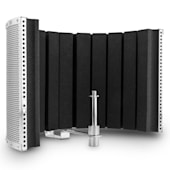
- Professional microphone shield for practical mounting behind the microphone
- Minimises reflections, noise and room reverberation - ideal for dry voice, vocal and instrument miking
- Flexible lightweight construction with metal guide rail and grippy thumbscrews for adjusting depth and height
Save with our sets:
You may change your order at any time.
You may change your order at any time.
You may change your order at any time.
You may change your order at any time.
You may change your order at any time.
You may change your order at any time.
You may change your order at any time.
You may change your order at any time.
You may change your order at any time.
You may change your order at any time.
You may change your order at any time.
You may change your order at any time.
You may change your order at any time.
You may change your order at any time.
You may change your order at any time.
You may change your order at any time.
You may change your order at any time.
You may change your order at any time.
You may change your order at any time.
You may change your order at any time.
You may change your order at any time.
You may change your order at any time.
You may change your order at any time.
You may change your order at any time.
You may change your order at any time.
You may change your order at any time.









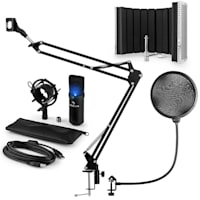
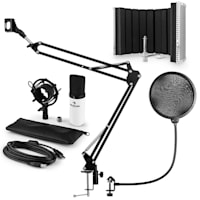


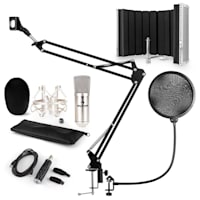
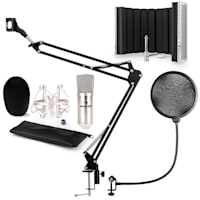
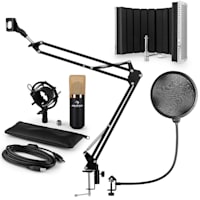
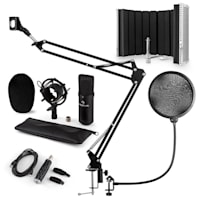
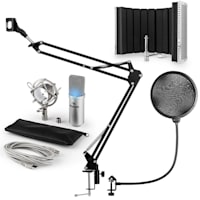
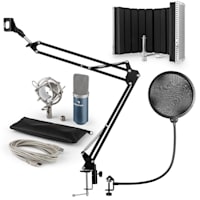
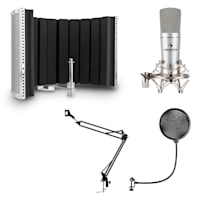
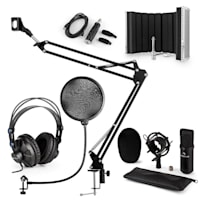
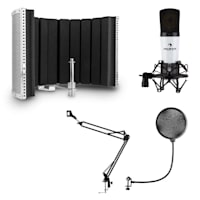
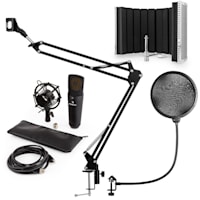
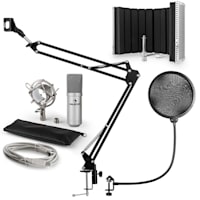
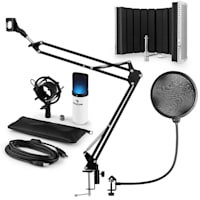
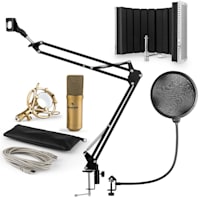
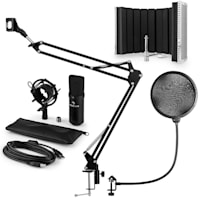
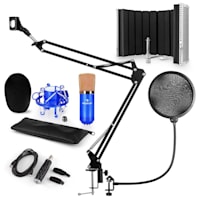
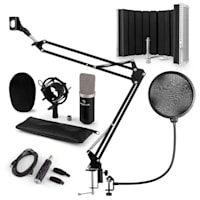

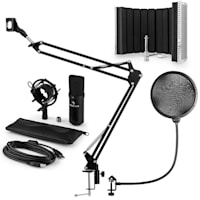
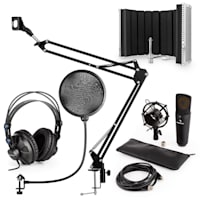
Per registrare voce e canto in modo professionale è particolarmente importante porre attenzione “a monte”, vale a dire al tipo di microfono da usarsi e all’ambiente in cui il suono viene registrato. Uno schermo per microfono è un accessorio specialmente utile se abbinato a microfoni diagramma polare a 8. Avendo già un microfono a nastro Auna l’ho voluto dotare di uno schermo per farmi un’idea di quanto lo schermo possa influire sulla qualità della registrazione vocale. Al momento ho solo montato lo schermo con il microfono e verificato che lo schermo attenua i suoni provenienti da direzioni indesiderate in modo efficace ma aspetto di rientrare dalle ferie per fare qualche prova con e senza schermo. Il video mostra solo come appare il dispositivo nelle sue parti e da montato, se riesco lo aggiornerò anche con una prova audio. I materiali e la fattura mi paiono buoni. Alle parti filettate da montare sull'asta si potrebbe chiedere una lavorazione un po' più accurata ma fanno bene la loro parte. Avrei preferito se il corpo fosse stato parzialmente smontabile, in mod da occupare meno spazio quando smontato. Questo oggetto è un po’ ingombrante rispetto a un semplice microfono, ma può dare un grosso contributo alla registrazione di voce e canto in un ambiente non trattato acusticamente, in particolar modo se si usano microfoni che abbiano un diagramma polare a “8”, come molti microfoni a nastro, o comunque con microfoni captino il suono anche da “dietro”. Lo scopo di questo strumento è quello di schermare il microfono da suoni che provengono da dietro per far sì che catturi solo, o per la maggior parte il suono frontale. Molti microfoni sono già costruiti in modo da essere sensibili per lo più ai suoni frontali in misura maggiore o minore, sono questi i microfoni “cardioide” o “ipercardioide”. Alcuni tipi di microfoni, come tanti microfoni a nastro, invece, hanno la caratteristica di catturare il suono sia da davanti che da dietro nello stesso modo, mentre sono quasi insensibili ai suono provenienti dai lati o da sopra/sotto. Se si registra la voce in un ambiente con pareti lisce, rigide, parallele, il suono “rimbalzerà” nell’ambiente e al microfono arriverà sia il suono diretto della voce ma anche un insieme di riflessioni e echi. Se si parla di fronte a un microfono a nastro e al di là del microfono c’è un muro, il suono si rifletterà sul muro e tornerà al microfono, sovrapponendosi al suono diretto e rendendolo meno pulito. Lo schermo evita che i suoni riflessi giungano al microfono. ed è utile anche se vi sono delle altre fonti di suono che non si desidera riprendere (strumenti, altre voci, delle casse monitor ecc.). Se, oltre allo schermo, si riesce a far sì che dietro a chi parla/canta ci sia una superficie fonoassorbente (una tenda pesante, per esempio), il risultato potrà essere ancora migliore. Nel mio caso il microfono a nastro Auna aveva già un suo supporto e non ho usato tutti gli accessori a disposizione. Questi ultimi diventano utili quando si vuole piazzare un microfono dotato di sospensione elastica. Questo articolo mi pare da prendere in considerazione per migliorare la qualità di registrazione di podcast, commenti vocali, canto.
To record voice and singing in a professional way it is particularly important to pay attention "upstream", that is to say the type of microphone to be used and the environment in which the sound is recorded. A microphone screen is an especially useful accessory when combined with figure-8 polar pattern microphones. Having already had an Auna ribbon microphone, I wanted to equip it with a screen to get an idea of how much the screen can influence the quality of the voice recording. At the moment I have only mounted the screen with the microphone and verified that the screen attenuates sounds coming from unwanted directions effectively but I am waiting to return from holidays to do some tests with and without the screen. The video only shows how the device appears in its parts and when assembled, if I can I will also update it with an audio test. The materials and workmanship seem good to me. The threaded parts to be mounted on the rod could be asked for a little more careful workmanship but they do their part well. I would have preferred if the body had been partially dismantled, so as to take up less space when disassembled. This object is a bit bulky compared to a simple microphone, but it can make a big contribution to recording voice and singing in an environment that is not acoustically treated, especially if you use microphones that have an “8” polar pattern, such as many ribbon microphones, or in any case with microphones, also pick up the sound from "behind". The purpose of this tool is to shield the microphone from sounds coming from behind so that it captures only, or mostly, the sound from the front. Many microphones are already built to be sensitive mostly to frontal sounds to a greater or lesser extent, these are “cardioid” or “hypercardioid” microphones. Some types of microphones, such as many ribbon microphones, however, have the characteristic of capturing sound both from the front and from behind in the same way, while they are almost insensitive to sounds coming from the sides or from above/below. If you record the voice in an environment with smooth, rigid, parallel walls, the sound will "bounce" in the environment and both the direct sound of the voice but also a set of reflections and echoes will arrive at the microphone. If you speak in front of a ribbon microphone and there is a wall beyond the microphone, the sound will reflect off the wall and return to the microphone, overlapping the direct sound and making it less clean. The screen prevents reflected sounds from reaching the microphone. and it is also useful if there are other sound sources that you do not want to record (instruments, other voices, monitor speakers, etc.). If, in addition to the screen, it is possible to ensure that behind the speaker/singer there is a sound-absorbing surface (a heavy curtain, for example), the result could be even better. In my case the Auna ribbon microphone already had its own support and I did not use all the accessories available. The latter become useful when you want to place a microphone equipped with elastic suspension. This article seems to me to be taken into consideration to improve the recording quality of podcasts, voice comments and singing.